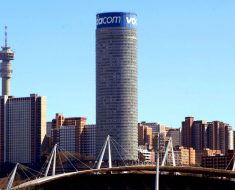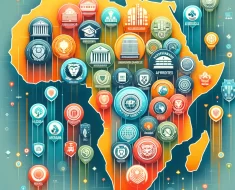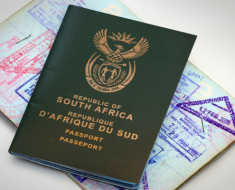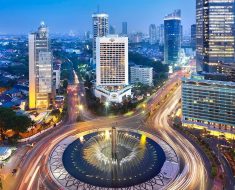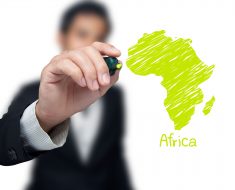BRICS is an acronym for the grouping of the world’s leading emerging economies, namely Brazil, Russia, India, China and South Africa.
The BRICS Leaders’ Summit is convened annually with discussions representing spheres of political and socio-economic coordination, in which member countries have identified several business opportunities, economic complementarities and areas of cooperation.
The Chairship of the forum is rotated annually among the members, in accordance with the acronym B-R-I-C-S. Over and above the summit, BRICS cooperation in the past decade has expanded to include an annual programme of over 100 sectoral meetings. Cooperation among members is predicated on three levels or “tracks” of interaction, namely:
Track I: Formal diplomatic engagement between the national governments
Track II: Engagement through government-affiliated institutions, e.g. state-owned enterprises and business councils
Track III: Civil society and “people-to-people” engagement.
The first BRIC Summit took place in 2009 in the Russian Federation and focused on issues such as reform of the global financial architecture. South Africa was invited to join BRIC in December 2010, after which the group adopted the acronym BRICS. Former South African President Jacob Zuma subsequently attended the Third BRICS Summit in Sanya, China, in March 2011.
The BRICS approach is informed by the need to deepen, broaden and intensify relations within the grouping and among the individual countries for more sustainable, equitable and mutually beneficial development. This approach takes into consideration each member’s growth, development and poverty objectives to ensure relations are built on the respective country’s economic strengths and to avoid competition where possible.
The bloc offers a unique opportunity for BRICS countries to extend and advance their cooperation in ways that meaningfully promote their economic development agendas as well as that of other developing countries.
South Africa assumed the rotational Chairship of BRICS from 1 January to 31 December 2018. The 2018 Summit will be a seminal milestone for BRICS cooperation, as it represents a decade of BRICS cooperation at the highest diplomatic level.
On 9 July 2008, leaders from Brazil, Russia, India and China (BRIC) held a brief meeting and took group photos during the dialogue meeting between the leaders of the G8 and the five developing nations in Hokkaido, Japan.
The First BRIC Summit was held in June 2009 in Yekaterinburg, Russia to discuss issues including the global financial crisis, the international situation, future direction of BRIC dialogue and cooperation, the G20 Summit, reform of international financial institutions, food security, energy security, climate change, development assistance, the Heiligendamm Process and prospects for BRIC dialogue. The Summit issued a joint statement that called for a greater say and representation of emerging markets and developing countries in international financial institutions, and adopted a Joint Statement on Global Food Security.
The Second BRIC Summit was held in April 2010 in Brasilia, Brazil. The leaders discussed issues including the international situation, the global financial crisis, the selection mechanism of the World Bank and International Monetary Fund’s (IMF) senior management, G20 affairs, climate change, United Nations (UN) reform, international and regional hot-spot issues and BRIC cooperation. The Summit issued a joint statement and agreed on concrete measures to promote BRIC cooperation and coordination.
South Africa was invited to join BRIC in December 2010, after which the group adopted the acronym BRICS. Former President Jacob Zuma subsequently attended the Third BRICS Summit in Sanya, China, in March 2011. The theme was “Broad Vision, Shared Prosperity”. Agenda items included the international situation, global economy and international finance, development and BRICS cooperation. The Summit issued the Sanya Declaration and its Action Plan. On the sidelines, the Meeting of Trade Ministers, an Academic Forum, a Financial Forum and a Business Forum were held.
The Fourth BRICs Summit was held in March 2012 in New Delhi, India. The theme was “BRICS Partnership for Global Stability, Security and Prosperity”. The leaders discussed issues including global governance and sustainable development. The Summit issued the New Delhi Declaration and Action Plan and the BRICS Report on BRICS countries’ developing prospects, the cooperation process and areas with competitive advantage to enable BRIC countries to play a more important role in the global economy in the post-financial crisis era.
The Fifth BRICS Summit was held in March 2013 in Durban, South Africa under theme “BRICS and Africa: Partnership for Development, Integration and Industrialization”. The Summit issued the eThekwini Declaration and Action Plan, and decided to set up the New Development Bank and Contingent Reserve Arrangement. The establishment of the BRICS Business Council and Think Tank Council was announced. The BRICS Leaders-Africa Dialogue Forum was held during the Summit.
The Sixth BRICS Summit was held in July 2014 in Fortaleza, Brazil under the theme “Inclusive Growth: Sustainable Solutions”. The leaders discussed such issues as political coordination, sustainable development and inclusive growth. The Summit issued the Fortaleza Declaration and Action Plan. The leaders witnessed the signing of the Agreement on the New Development Bank and the Treaty for the Establishment of a BRICS Contingent Reserve Arrangement. BRICS Leaders meeting with South American Heads of Government and/or State was held during the Summit.
The Seventh BRICS Summit was held in July 2015 in Ufa, Russia under the theme “BRICS Partnership – a Powerful Factor of Global Development”. The leaders discussed issues including global political and economic issues and BRICS cooperation. The Summit issued the Ufa Declaration and Action Plan, and adopted the Strategy for BRICS Economic Partnership. The BRICS Leaders also held a meeting with the leaders of Eurasian Economic Union and the Shanghai Cooperation Organization and the leaders of observer countries during the Summit.
The Eight BRICS Summit was held in October 2016 in Goa, India under the theme “Building Responsive, Inclusive and Collective Solutions”. The leaders discussed issues including international political and economic situation, global governance, counter-terrorism, climate change, Sustainable Development Goals, BRICS cooperation, and people-to-people and cultural exchanges. The Summit issued the Goa Declaration and Action Plan, and reiterated the commitment to strengthening BRICS partnership. Outreach Summit of BRICS Leaders with the Leaders of BIMSTEC Member Countries was held during the Summit.
The Ninth BRICS Summit was held in Xiamen, China under the theme “BRICS: Stronger Partnership for a Brighter Future”. The leaders built on achievements already made with a share vision for future development of BRICS, discussed international and regional issues of common concern and adopted the Xiamen Declaration.
Besides these engagements, BRICS Leaders held informal meetings during the G20 Cannes Summit in November 2011, the Los Cabos Summit in June 2012, the St. Petersburg Summit in September 2013, the Brisbane Summit in November 2014, the Antalya Summit in November 2015, and the Hangzhou Summit in September 2016, to exchange views on international and regional issues of common interest.
1) Represents 3 Billion People. (40% of World Population)
2) Accounts for $20 Trillion of GDP which is growing at 28% Growth Rate.
3) First Summit in 2009, in the midst of Global Recession.
4) No European/US as a member.
5) Idea to form this group was conceived by Goldman Sachs.
At the fourth BRICS Summit in New Delhi (2012), the leaders of Brazil, Russia, India, China and South Africa considered the possibility of setting up a new Development Bank to mobilize resources for infrastructure and sustainable development projects in BRICS and other emerging economies, as well as in developing countries. They directed Finance Ministers to examine the feasibility and viability of this initiative, to set up a joint working group for further study, and to report back by the next Summit in 2013.
Following the report from the Finance Ministers at the fifth BRICS summit in Durban (2013), the leaders agreed on the feasibility of establishing the New Development Bank and made the decision to do so. It was also agreed that the initial contribution to the Bank should be substantial and sufficient for it to be effective in financing infrastructure.
During the sixth BRICS Summit in Fortaleza (2014), the leaders signed the Agreement establishing the New Development Bank (NDB).
In the Fortaleza Declaration, the leaders stressed that the NDB will strengthen cooperation among BRICS and will supplement the efforts of multilateral and regional financial institutions for global development, thus contributing to collective commitments for achieving the goal of strong, sustainable and balanced growth.
“The Bank shall have an initial authorized capital of US$ 100 billion. The initial subscribed capital shall be US$ 50 billion, equally shared among founding members. The first chair of the Board of Governors shall be from Russia. The first chair of the Board of Directors shall be from Brazil. The first President of the Bank shall be from India. The headquarters of the Bank shall be located in Shanghai. The New Development Bank Africa Regional Center shall be established in South Africa concurrently with the headquarters.” (Fortaleza Declaration)
The inaugural meeting of the Board of Governors of the NDB was chaired by Russia and held on the eve of the Ufa Summit on 7 July 2015, when the Bank formally came into existence as a legal entity. During the meeting, the appointment of the President, Mr. K.V. Kamath, as well as four Vice Presidents and the Board of Directors took place.
At the signing of the Headquarters Agreement with the government of the People’s Republic of China and the Memorandum of Understanding with the Shanghai Municipal People’s Government on 27 February 2016, the NDB became fully operational.
In 2016-2017, the Board of Directors of the Bank approved loans involving financial assistance of over USD 3.4 bln for projects in the areas of green and renewable energy, transportation, water sanitation, irrigation and other areas.
- What are the BRICS?
In 2001, Jim O’Neill, then Chief Economist of Goldman Sachs, coined the acronym for Brazil, Russia, India and China as the largest emerging markets economies. He expected them to grow faster than the developed countries and to play an increasingly important role in the world.
And so they have. In the last 15 years, Brazil, Russia, and India have caught up with the smallest G7 economy (Italy) in terms of nominal GDP, while China has overtaken Japan and became the second largest economy in the world. Together, BRIC’s nominal GDP is similar to that of the EU or US and is likely to overtake both in the coming few years.
In 2009, BRIC countries held their first summit. In 2010, South Africa asked to join and was invited – thus transforming BRICs into BRICS.
- Why does the world need the BRICS?
Jim O’Neill’s point has been that the world is changing. The leading role of the Group of Seven (G7) and, more broadly, of the Organisation for Economic Cooperation and Development (OECD) is no longer undisputed. Most multi-lateral institutions were designed in the era when the West dominated the world. The US and Europe are over-represented in the IMF and the World Bank. Together with Japan, they control most regional development banks as well.
This imbalance has been especially clear during the recent global financial crisis when the need for participation by non-G7 countries became evident. This resulted in reviving the Group of 20 (G20) and proposals to redistribute voting rights in international financial institutions. But change has been slow and Western countries continue to control the international financial institutions.
This is why BRICS summits are so important. These meetings provide a unique forum where non-OECD leaders can discuss global challenges and co-ordinate their actions within and outside global institutions. The small size of the club and the absence of OECD partners helps in shaping the discussions at the summit.
- What have the BRICS nations achieved?
Even though BRICS are now playing a far more important role in the global economy, they have not yet managed to get their act together. Even on key issues like selecting a successor to Dominique Strauss-Kahn at the IMF, BRICS countries were not able to put forward a credible alternative to the conventional approach that IMF should be run by a Western European. Nor have they been able to speak with one voice about the most important global economic and financial challenges – co-ordination of monetary and fiscal policies, macroprudential regulation, development aid etc.
- Do they have enough in common to get things done?
BRICS countries are very different — both in terms of their resources and in terms of their values and goals. The only thing they all have in common is, well, membership of BRICS. Brazil and India are democratic, China and Russia are not. Brazil and Russia export hydrocarbons, China and India are net importers. China and Russia are permanent members of the UN Security Council – the others are not. Structure of financial systems, levels of income, education, inequality, health challenges also differ substantially within BRICS. This is why it is very hard to speak with a unified voice and to co-ordinate action. The fact that BRICS have not really established anything tangible yet should not be a disappointment.
- What could they do?
This problem of inaction will soon be overcome. BRICS now have a clear leader than can address the issue of internal differences in goals and resources. BRICS is quickly becoming a China-led club. Unlike 15 years ago, China’s nominal GDP is now larger than that of the other club members combined. The same its true with net international financial position, outward Foreign Direct Investment and development aid.
China’s leadership has finally turned the long-debated plan for a “BRICS Bank” into a reality. The BRICS have founded the New Development Bank (NDB), which will become a major regional development bank – the first one without OECD-countries’ membership (unless of course Greece joins.)
The establishment of NDB (head-quartered in Shanghai) suggests international financial institutions should have been more flexible in adjusting their governance to accommodate the increased role of BRICS in the world. NDB is not likely – at least initially – to outperform existing development banks in terms of skills and project quality. However, it will be the first tangible multi-lateral project fully owned by the non-OECD countries – in a sense confirming that Jim O’Neill’s vision was correct.
However, the very fact that the only tangible BRICS project is NDB is also telling. NDB is taking off exactly because it fits into China’s grander New Silk Road or “One Belt, One Road” vision. NDB is in this sense proof that the BRICS club – like Shanghai Cooperation Organization – is now led by China. In summits, BRICS’ leaders will talk as equals but whenever BRICS is up to something real, it will be following China’s strategy.


